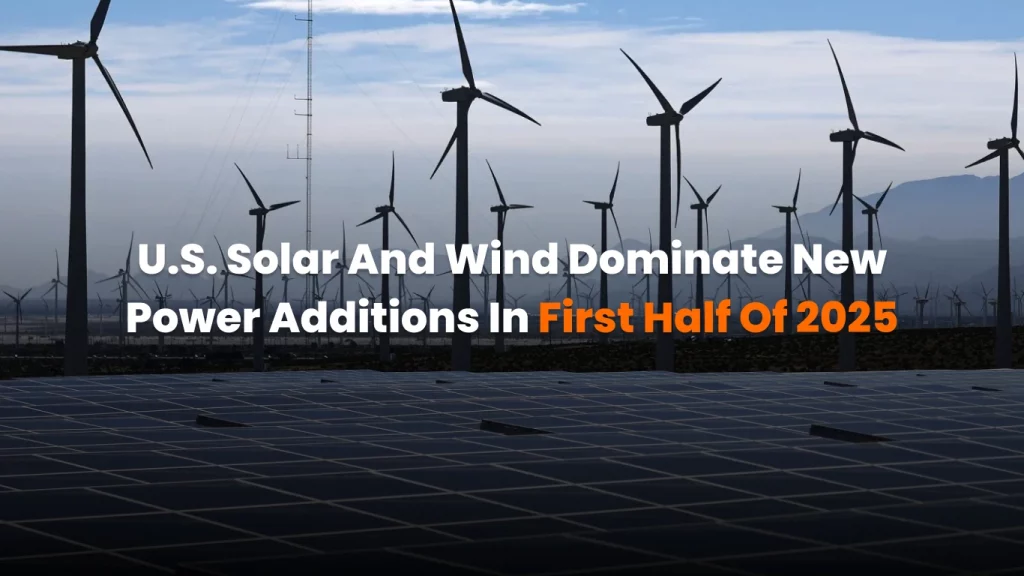The U.S. energy sector experienced a significant shift in the first half of 2025, with solar and wind energy accounting for 91.04% of all new electrical capacity additions. This marks a notable increase from previous years, underscoring the nation’s accelerating transition toward renewable energy sources.
According to data from the U.S. Energy Information Administration (EIA), the combination of solar and wind, along with 3 megawatts (MW) of biomass, contributed to 91.04% of the new electrical capacity in the first half of 2025. In contrast, natural gas additions were minimal, comprising just 8.96% of the new capacity. This trend reflects a continued decline in natural gas-based power generation, which has seen a decrease from 22% of new capacity in the first half of 2024.
Policy and market drivers
Several factors have contributed to the surge in renewable energy installations. Federal incentives, such as the Investment Tax Credit (ITC) and the Production Tax Credit (PTC), have provided financial support for solar and wind projects. Additionally, state-level renewable energy standards and policies have created favorable conditions for clean energy investments. The growing demand for sustainable energy solutions among consumers and businesses has further accelerated the adoption of renewable technologies.
Infrastructure and grid integration
The rapid expansion of renewable energy capacity has prompted discussions about the need for enhanced grid infrastructure to accommodate the influx of intermittent power sources. Upgrades to transmission networks and the development of energy storage solutions are critical to ensuring a reliable and resilient energy system. Efforts to streamline interconnection processes and reduce permitting delays are also underway to facilitate the integration of new renewable projects.
Outlook
Looking ahead, the momentum behind solar and wind energy is expected to continue. With ongoing policy support and technological advancements, the share of renewable energy in the U.S. power mix is poised to grow, potentially surpassing natural gas in new capacity additions in the near future. This transition aligns with broader goals to reduce greenhouse gas emissions and combat climate change.
In summary, the first half of 2025 has seen a transformative shift in the U.S. energy landscape, with solar and wind energy leading the way in new capacity additions. As the nation continues to invest in renewable energy, the path toward a cleaner, more sustainable energy future becomes increasingly attainable.




